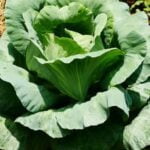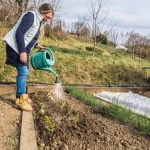Are you interested in diving into the world of Arizona vegetable gardening? With its unique climate and growing conditions, Arizona presents a set of challenges and opportunities for those looking to cultivate their own produce. From selecting the best vegetables to understanding soil and watering needs, there are various factors to consider when it comes to successful vegetable gardening in Arizona.
Arizona’s arid climate and intense heat make it essential for gardeners to carefully select the right vegetables that can thrive in these conditions. Understanding the specific requirements for soil, watering, and sunlight is crucial for a successful harvest. In this article, we will explore the ins and outs of vegetable gardening in Arizona, providing tips, tricks, and insights for navigating this distinct gardening landscape.
Whether you are a seasoned gardener or a beginner looking to start your own vegetable garden in Arizona, this guide will provide valuable information on maximizing space with container gardening, managing pests and diseases, as well as connecting with supportive communities and resources. Get ready to explore the world of Arizona vegetable gardening and learn how to make the most out of this unique climate.
Selecting the Best Vegetables for Arizona’s Growing Conditions
When it comes to Arizona vegetable gardening, selecting the right vegetables that can thrive in the unique growing conditions of the state is crucial for a successful harvest. With its hot and arid climate, Arizona requires careful consideration when choosing which vegetables to plant. Here are some tips for selecting the best vegetables for Arizona’s growing conditions.
Heat-Tolerant Vegetables
Arizona’s scorching hot temperatures make it essential to choose heat-tolerant vegetables that can withstand the intense sun and high temperatures. Some excellent options for Arizona vegetable gardening include tomatoes, peppers, eggplant, okra, and sweet potatoes. These vegetables are well-suited to the long, hot summers of Arizona and can produce bountiful yields with proper care.
Drought-Resistant Varieties
Due to its limited water supply, Arizona also requires drought-resistant vegetable varieties that can thrive in low water conditions. Consider planting vegetables such as drought-tolerant beans, melons, squash, and corn. These vegetables have adapted to survive with minimal water and can still produce abundant crops in Arizona’s dry climate.
Short Growing Season Varieties
In many parts of Arizona, the growing season is relatively short due to extreme temperatures. Therefore, it is important to select vegetable varieties that have a shorter maturity period and can be harvested quickly. Look for quick-growing options like radishes, arugula, spinach, and green onions that can be ready for harvest in just a few weeks.
These fast-growing vegetables are ideal for maximizing your yield within the limited growing window of Arizona. By carefully choosing heat-tolerant, drought-resistant, and short-maturity vegetables suited for Arizona’s unique climate, you can ensure a successful vegetable garden that will thrive despite the challenges of the environment.
Overall these tips show how important it is to know about arizona vegetable gardening before starting a garden there as it has different conditions then traditional gardens in other climates.
Understanding the Soil and Watering Needs for Successful Vegetable Gardening in Arizona
Arizona’s unique climate presents both challenges and opportunities when it comes to vegetable gardening. Understanding the specific soil and watering needs for successful vegetable gardening in Arizona is crucial for a bountiful harvest.
Soil Composition and Amendment
Arizona’s soil composition varies across the state, but most areas have sandy or clay-like soils. These soil types can present certain challenges for vegetable gardening, such as poor drainage or compaction. It’s important to amend the soil with organic matter, such as compost or aged manure, to improve its structure and fertility. Additionally, adding a balanced fertilizer can help provide essential nutrients for plant growth.
Watering Techniques and Considerations
Due to Arizona’s arid climate, proper watering is essential for vegetable gardening success. Drip irrigation systems are highly recommended to deliver water directly to the base of plants while minimizing evaporation. Mulching around plants can also help retain soil moisture and reduce water loss. It’s important to monitor the moisture levels of the soil regularly, especially during hot and dry periods, and adjust watering schedules accordingly.
Utilizing Water-Saving Techniques
Given Arizona’s limited water resources, implementing water-saving techniques in vegetable gardening is crucial. Consider capturing rainwater in barrels for later use or utilizing graywater from household sources (with proper filtration) for irrigation. Additionally, planting drought-tolerant vegetables and utilizing xeriscaping principles can help conserve water while still enjoying a thriving garden.
By understanding the specific soil and watering needs in Arizona vegetable gardening, gardeners can overcome the challenges posed by the state’s climate and cultivate healthy, productive gardens. Proper soil preparation, effective watering techniques, and water-saving strategies are essential components of successful vegetable gardening in Arizona.
Tips for Starting a Successful Vegetable Garden in Arizona
When starting a successful vegetable garden in Arizona, there are some important tips to keep in mind. First and foremost, it is crucial to understand the unique climate of Arizona, which can be quite different from other regions. With hot temperatures and dry conditions, it’s important to select vegetables that are well-suited for this environment.
One of the most important tips for starting a successful vegetable garden in Arizona is to choose heat-tolerant and drought-resistant vegetables. Some great options include tomatoes, peppers, squash, and melons. These vegetables are able to thrive in the arid conditions of Arizona and can withstand the high temperatures during the summer months.
In addition to selecting the right vegetables, it’s also essential to prepare the soil properly for Arizona vegetable gardening. The soil in Arizona tends to be sandy and lacks organic matter, so it’s important to add compost and other organic materials to improve its quality. Proper watering is also crucial, as the dry climate requires regular irrigation for vegetable plants to thrive.
Furthermore, choosing the right location for your vegetable garden is key. Consider planting in an area with access to shade during the hottest part of the day and protection from strong winds. By taking these factors into consideration when starting a vegetable garden in Arizona, you can set yourself up for a successful growing season.
| Arizona Vegetable Garden Tip | Details |
|---|---|
| Choose heat-tolerant and drought-resistant vegetables | Tomatoes, peppers, squash, melons |
| Prepare soil with compost and organic materials | To improve quality in sandy soil |
Managing Pests and Diseases in Arizona Vegetable Gardens
Arizona vegetable gardening comes with its own set of challenges when it comes to managing pests and diseases. The hot and dry climate creates the perfect conditions for certain pests to thrive, while the lack of precipitation can make plants more susceptible to diseases. It’s crucial for gardeners in Arizona to be proactive in preventing and managing these issues in order to have a successful harvest.
To effectively manage pests and diseases in your Arizona vegetable garden, consider the following tips:
- Regularly inspect your plants for any signs of pest damage or disease.
- Use organic pest control methods such as neem oil, insecticidal soap, and companion planting to deter common pests like aphids, whiteflies, and spider mites.
- Practice good sanitation by removing any diseased plants or plant debris from the garden to prevent the spread of diseases.
- Consider using row covers or netting to protect your plants from common garden pests.
In addition to these prevention methods, it’s important for Arizona vegetable gardeners to educate themselves on the specific pests and diseases that are common in the region. By staying informed, you can quickly identify any issues that arise in your garden and take action before they become major problems. Partnering with local gardening communities and resources can also provide valuable support and guidance when it comes to managing pests and diseases in your Arizona vegetable garden.
Maximizing Space With Container Gardening in Arizona
Container gardening is a great option for those looking to maximize space in their Arizona vegetable garden. The hot and dry climate of Arizona can make traditional in-ground gardening a bit challenging, but container gardening offers flexibility and control over soil, watering, and sun exposure.
When it comes to container gardening in Arizona, there are a few key considerations to keep in mind:
- Choosing the Right Containers: When selecting containers for your vegetable garden, opt for large pots with good drainage. Make sure the containers are made of lightweight material to avoid overheating in the intense Arizona sun.
- Soil Selection: Use a high-quality potting mix that is well-draining and designed for container gardens. In Arizona’s arid climate, the soil can quickly dry out, so choosing the right soil is crucial for the success of your vegetables.
- Watering: Container gardens require more frequent watering than traditional gardens, especially in the Arizona heat. Be diligent about watering your vegetable plants and consider using self-watering containers or installing drip irrigation systems to ensure adequate moisture levels.
One of the major benefits of container gardening in Arizona is the ability to move your plants around to optimize sun exposure. This is especially important during the scorching summer months when some vegetables may benefit from a bit of shade during the hottest part of the day. Additionally, container gardening allows for better control over pests and diseases that can be common in traditional gardens.
Overall, container gardening in Arizona offers an effective solution for growing a variety of vegetables while maximizing space and adapting to the unique challenges posed by the state’s climate. Whether you have limited outdoor space or simply want more control over your growing conditions, container gardening can be a practical and rewarding option for Arizona vegetable gardeners.
The Best Time to Plant and Harvest Vegetables in Arizona
Planting and harvesting vegetables in Arizona can be quite different from other parts of the country, due to the state’s unique climate and growing conditions. The best time to plant and harvest vegetables in Arizona varies depending on the region within the state and the specific vegetable being grown.
In general, the best time to plant cool-season vegetables such as lettuce, spinach, carrots, and peas in Arizona is during the fall and winter months, typically from September to February. These vegetables thrive in the milder temperatures of Arizona’s winter season. On the other hand, warm-season vegetables like tomatoes, peppers, squash, and cucumbers are best planted in the spring, after the last frost date has passed.
When it comes to harvesting vegetables in Arizona, timing is crucial for optimal flavor and yield. For example, tomatoes should be harvested when they are fully colored but still firm, while lettuce is best harvested before it bolts and turns bitter in hot weather. It’s important for Arizona gardeners to be aware of their specific planting zone and microclimate in order to determine the best planting and harvesting times for their particular area.
| Vegetable | Best Time to Plant | Best Time to Harvest |
|---|---|---|
| Lettuce | Fall or Spring | Before bolting in hot weather |
| Tomatoes | Spring | When fully colored but still firm |
| Squash | Spring | When fruits reach desired size |
Overall, by understanding Arizona’s unique climate and following recommended planting schedules for different vegetables, gardeners can maximize their success in growing a bountiful harvest of fresh produce. Additionally, consulting with local gardening resources or joining community gardening groups can provide valuable insights into the best planting and harvesting times for specific regions within Arizona.
Connecting With Arizona Vegetable Gardening Communities and Resources for Support
In conclusion, Arizona’s unique climate presents both challenges and opportunities for vegetable gardening. With the right knowledge and techniques, gardeners can successfully grow a variety of vegetables in this arid and often unforgiving environment.
Selecting the best vegetables for Arizona’s growing conditions is crucial to success. By choosing heat-tolerant and drought-resistant varieties, gardeners can ensure a bountiful harvest despite the challenges of the climate. Understanding the soil and watering needs specific to Arizona is also essential for thriving vegetable gardens.
It’s important for Arizona vegetable gardeners to connect with communities and resources for support. Whether it’s joining local gardening groups, attending workshops, or seeking advice from experienced gardeners, there are plenty of opportunities to learn and exchange ideas about Arizona vegetable gardening. By sharing knowledge and experiences, gardeners can overcome obstacles and achieve success in their endeavors of arizona vegetable gardening.
Frequently Asked Questions
What Vegetable Grows Best in Arizona?
The vegetable that grows best in Arizona is the tomato. It thrives in the desert climate and can be grown throughout the state. With proper care and watering, tomatoes can yield a bountiful harvest.
When Should I Start a Vegetable Garden in Arizona?
In Arizona, it’s best to start a vegetable garden in late winter or early spring. This timing allows the vegetables to establish themselves before the intense heat of summer arrives. Starting too late may result in stunted growth or bolting due to the heat.
What Is the Easiest Vegetable to Grow in the Desert?
The easiest vegetable to grow in the desert is the sweet pepper. Peppers are relatively low maintenance and can tolerate the hot and dry conditions of the desert. They just need regular watering and some protection from scorching sun.

If you’re looking to get into vegetable gardening, or are just looking for some tips on how to make your current garden better, then you’ve come to the right place! My name is Ethel and I have been gardening for years. In this blog, I’m going to share with you some of my best tips on how to create a successful vegetable garden.





